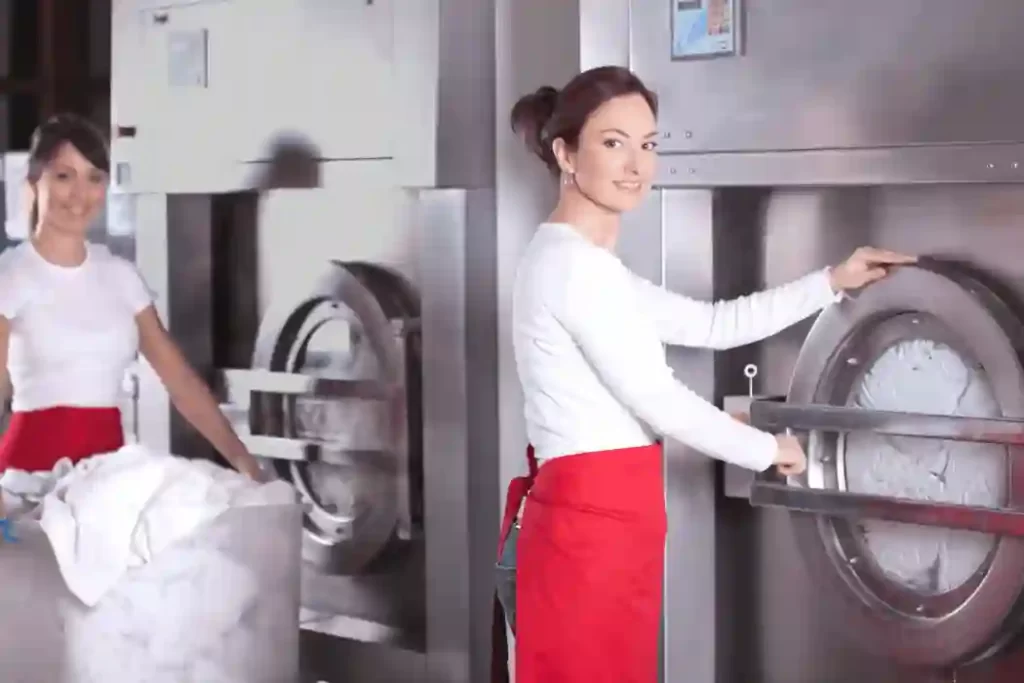Laundry services have come a long way over the years. From hand-washing clothes on washboards to the latest high-tech machines, the laundry industry has evolved significantly. In this article, we will explore the history of laundry services, the challenges faced by the industry, and how technology has changed the way we do laundry.
Early History of Laundry Services
Laundry services have been around for centuries. In ancient times, people would wash their clothes by hand in rivers or streams. However, this was a time-consuming and labor-intensive process, which was not suitable for everyone.
In the Middle Ages, laundry services were provided by washerwomen who would wash clothes for others in public washing areas. These washerwomen would use large wooden tubs, soap, and wooden paddles to wash clothes.
In the 18th century, the first washing machines were invented. These machines were manual and made of wood or metal. They were operated by turning a crank, which would move the clothes back and forth in soapy water.
The 19th century saw the invention of the first mechanical washing machine. These machines used a hand-operated lever to move the clothes through the water. However, these machines were expensive and not accessible to everyone.
Our laundry service is the perfect solution for your home renovation project, ensuring that your clothes stay fresh and clean throughout the process.

The Early 20th Century
In the early 20th century, electric washing machines were introduced. These machines were powered by electricity and used a motor to agitate the clothes. This made the washing process much easier and faster.
However, early electric washing machines were still quite basic and had some limitations. For example, they did not have spin dryers, so clothes had to be wrung out by hand or with a wringer. This was a time-consuming and tiring process.
The Mid-20th Century
In the mid-20th century, automatic washing machines were introduced. These machines were fully automated and included spin dryers, which eliminated the need for manual wringing.
Automatic washing machines became very popular in the 1950s and 1960s. They were seen as a time-saving and convenient solution for busy households. However, these early machines were still quite basic and had limited features.
The Late 20th Century
In the late 20th century, washing machines continued to evolve. They became more advanced and included features such as multiple wash cycles, temperature controls, and water level controls.
Dryers also became more advanced, with the introduction of sensor technology that could detect when clothes were dry and shut off the machine automatically.
The 21st Century
In the 21st century, laundry services have continued to evolve, with the introduction of high-tech machines and services. Today, we have machines that are capable of washing and drying clothes in a single cycle. We also have machines that use less water and energy, making them more environmentally friendly.
The Challenges Faced by the Laundry Industry
Despite the advancements in laundry technology, the laundry industry still faces some significant challenges. One of the most significant challenges is the cost of equipment and maintenance.
Laundry machines are expensive to purchase and maintain. This makes it difficult for small businesses to enter the market and compete with larger players. In addition, laundry machines require regular maintenance and repairs, which can be costly.
Another challenge faced by the laundry industry is the cost of labor. Labor costs are a significant expense for laundry services, particularly for those that offer pick-up and delivery services.
The rise of online shopping and e-commerce has also had an impact on the laundry industry. Many consumers now prefer to buy clothes online, which means they are not visiting traditional brick-and-mortar stores. This has resulted in a decline in foot traffic for dry cleaners and laundry services.
The Impact of Technology on Laundry Services
Technology has had a significant impact on the laundry industry. It has revolutionized the way we do laundry and has led to the development of high-tech machines and services that make the process faster, more efficient, and more convenient.
One of the most significant advancements in laundry technology has been the development of high-tech washing machines and dryers. These machines use advanced sensors and technology to detect the type of fabric and adjust the wash cycle accordingly. This ensures that clothes are not damaged during the washing process.
High-tech machines also offer more wash cycle options, such as delicate, hand-wash, and eco-friendly modes. This allows consumers to choose the most suitable cycle for their clothes and helps to reduce energy consumption and water usage.
In addition to high-tech machines, technology has also enabled the development of online laundry services. With online laundry services, customers can schedule pick-up and delivery of their laundry online. This makes the process more convenient for busy customers who do not have time to drop off and pick up their laundry.
Some online laundry services also offer mobile apps that allow customers to track the progress of their laundry in real-time. This gives customers peace of mind and allows them to plan their day around the delivery of their clean clothes.
Finally, technology has also enabled the development of eco-friendly laundry services. Some laundry services now use eco-friendly detergents and machines that use less water and energy. This is important for consumers who are concerned about the environment and want to reduce their carbon footprint.
Conclusion
Laundry services have come a long way over the years. From hand-washing clothes on washboards to the latest high-tech machines, the laundry industry has evolved significantly. Technology has played a crucial role in this evolution, and it has revolutionized the way we do laundry.
While the laundry industry still faces some significant challenges, such as the cost of equipment and labor, technology has enabled the development of high-tech machines and services that make the process faster, more efficient, and more convenient. With further advancements in technology, it is likely that the laundry industry will continue to evolve and adapt to changing consumer needs and preferences.

